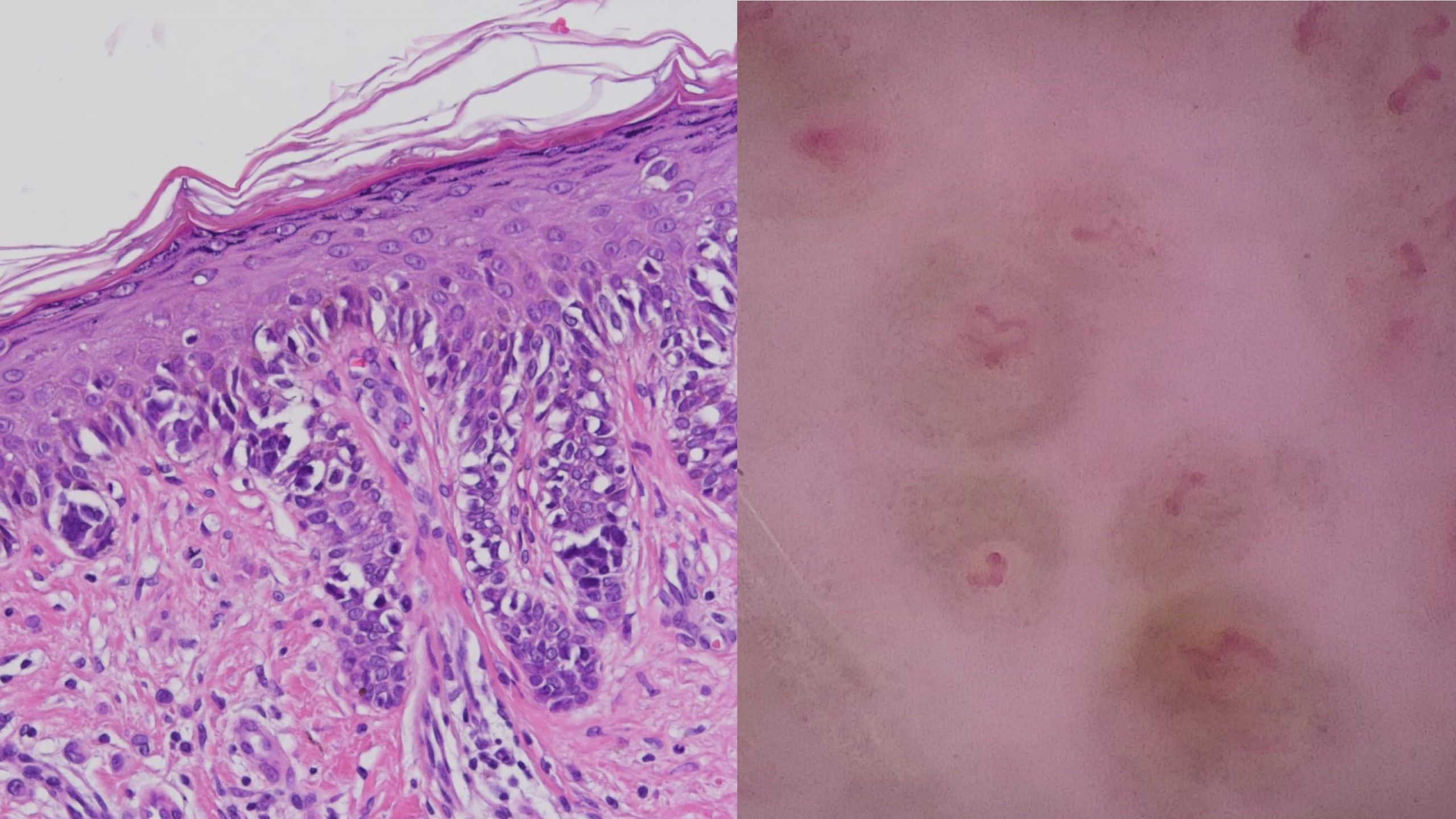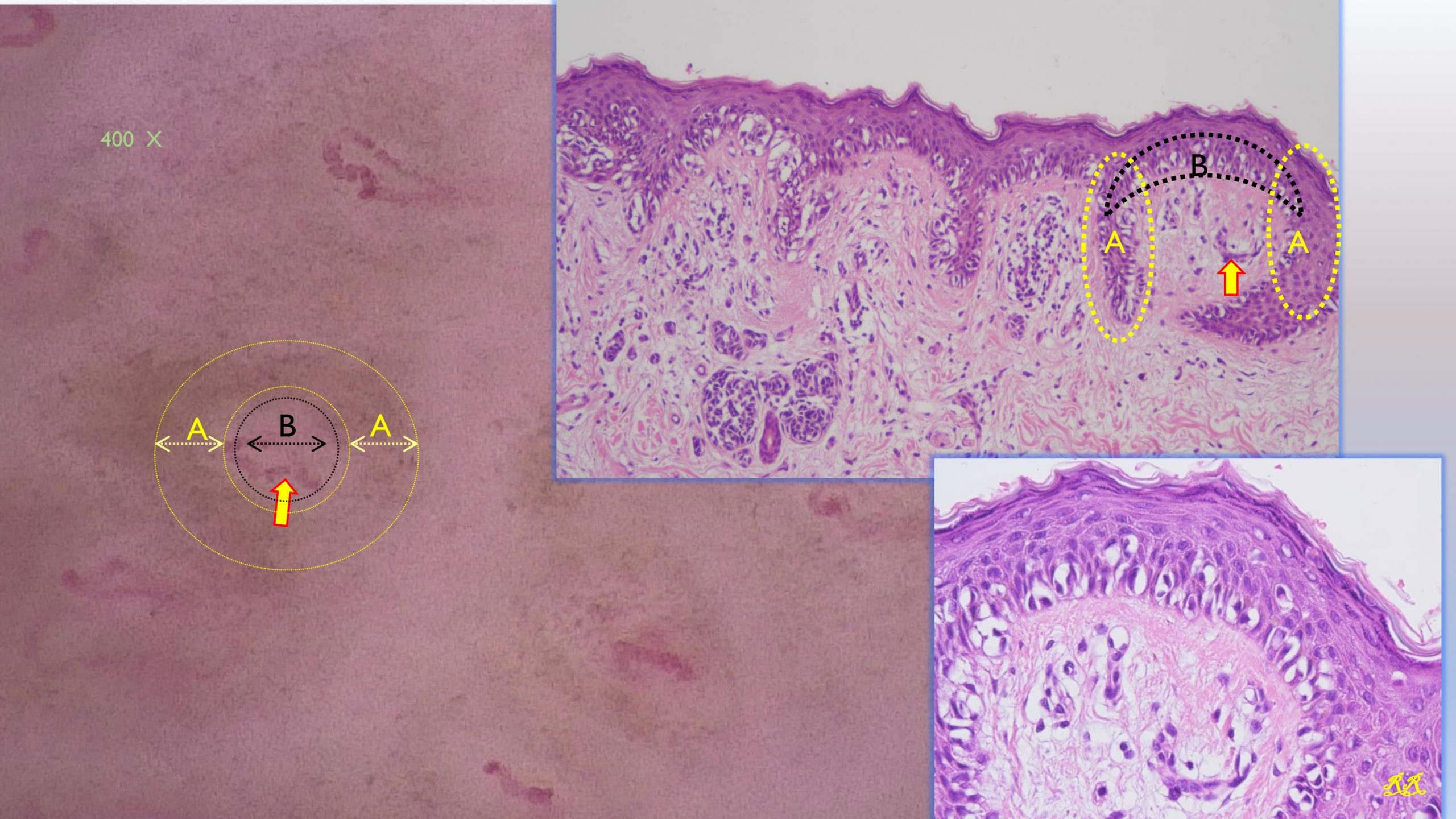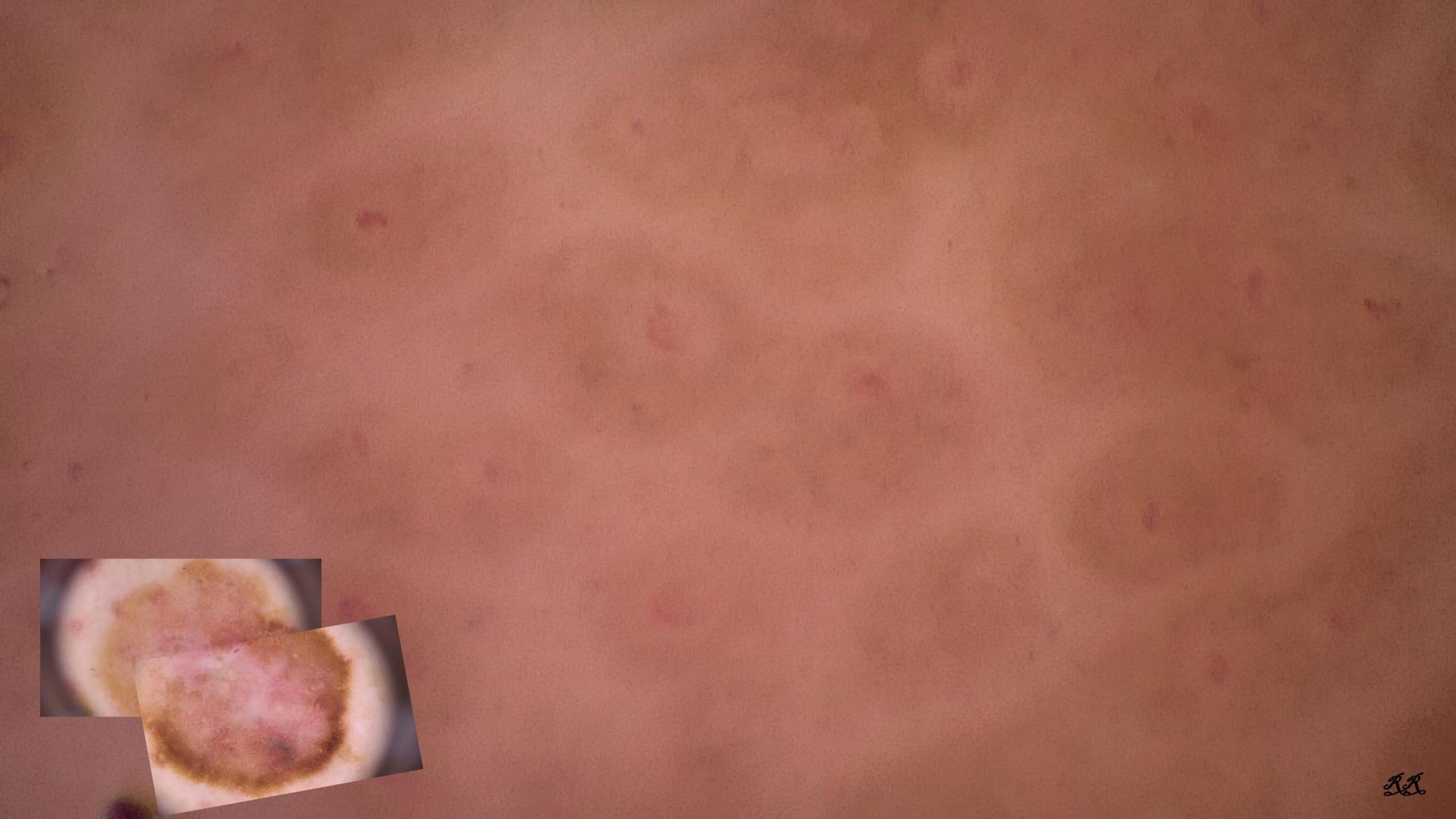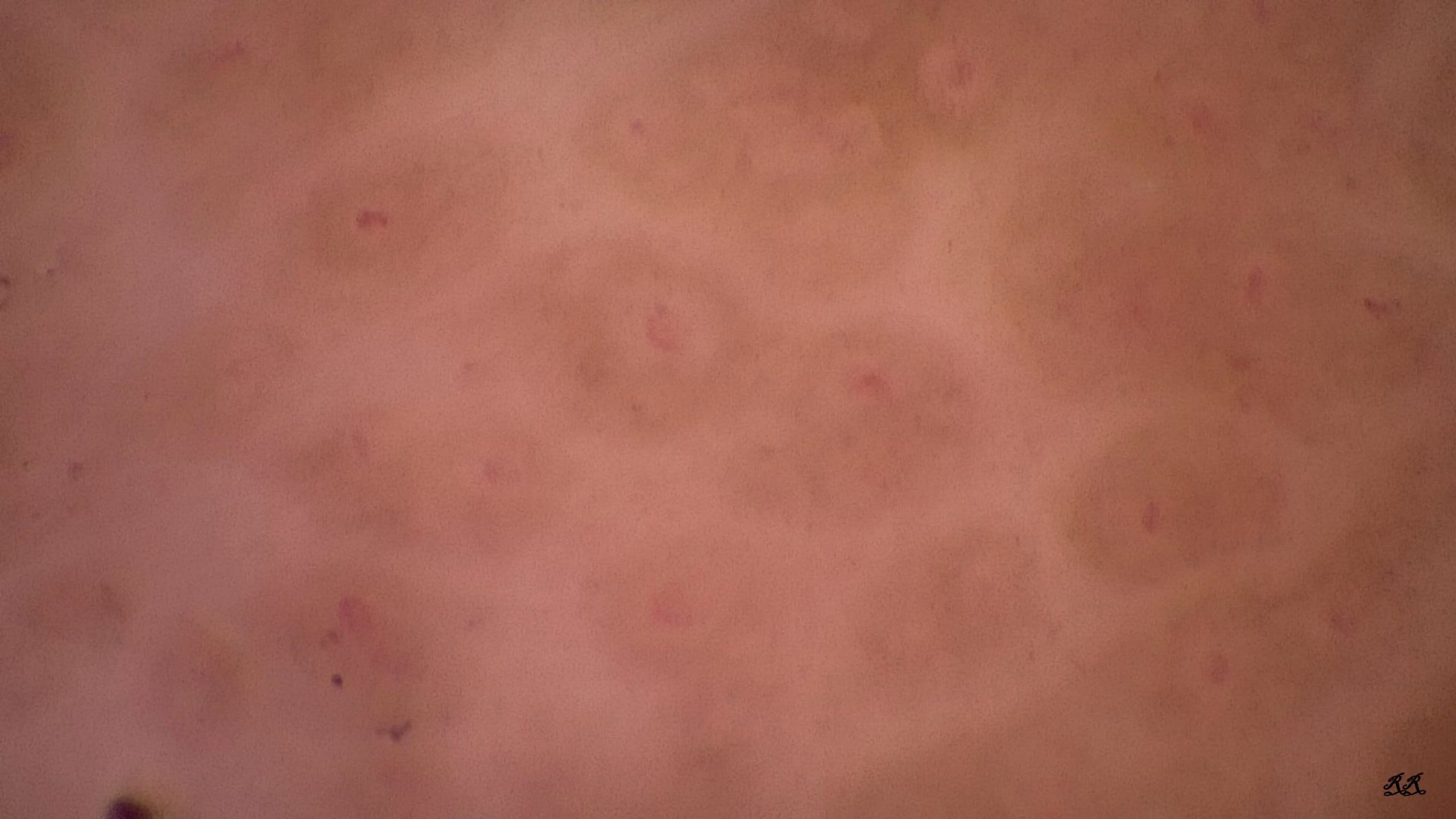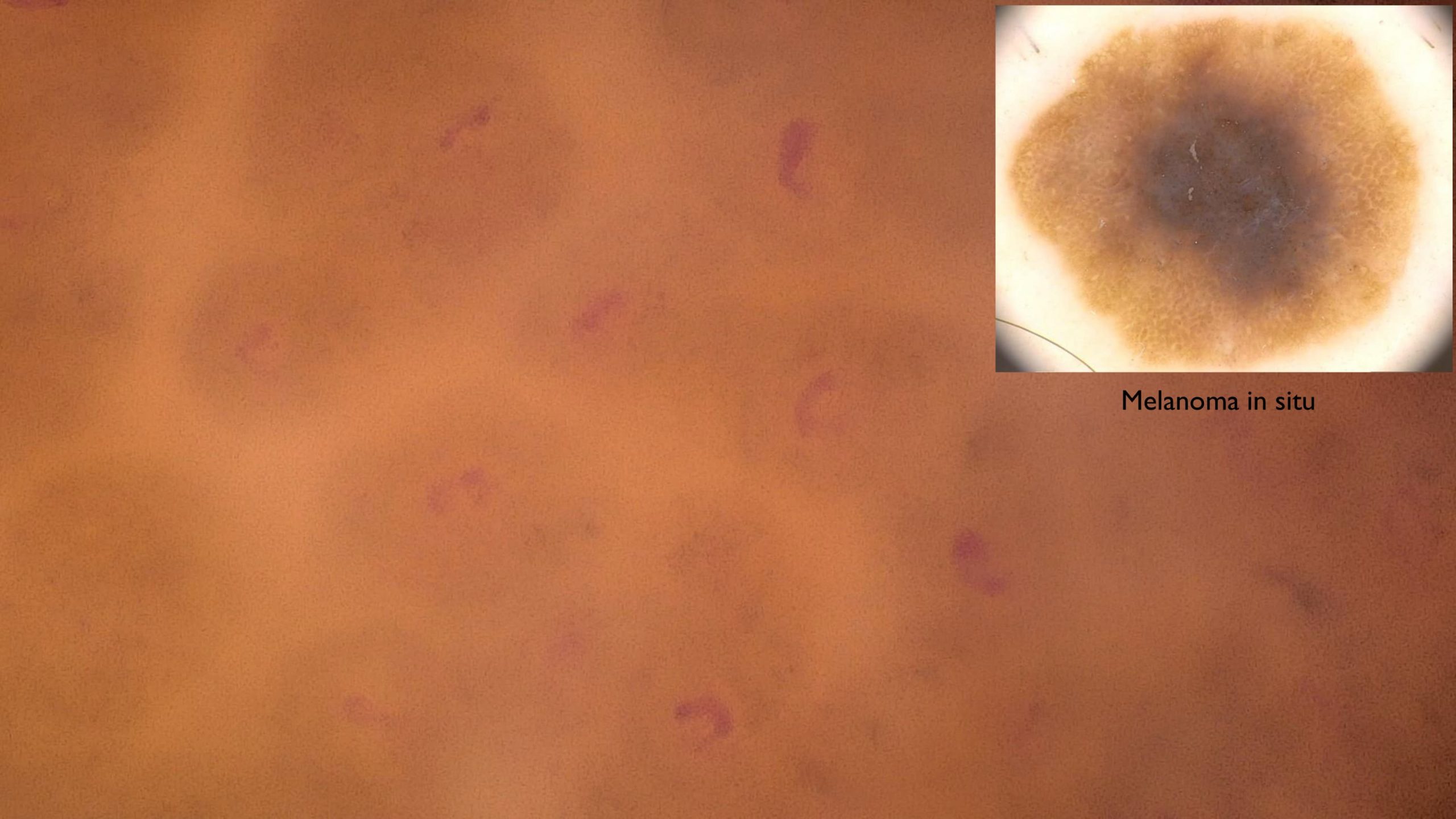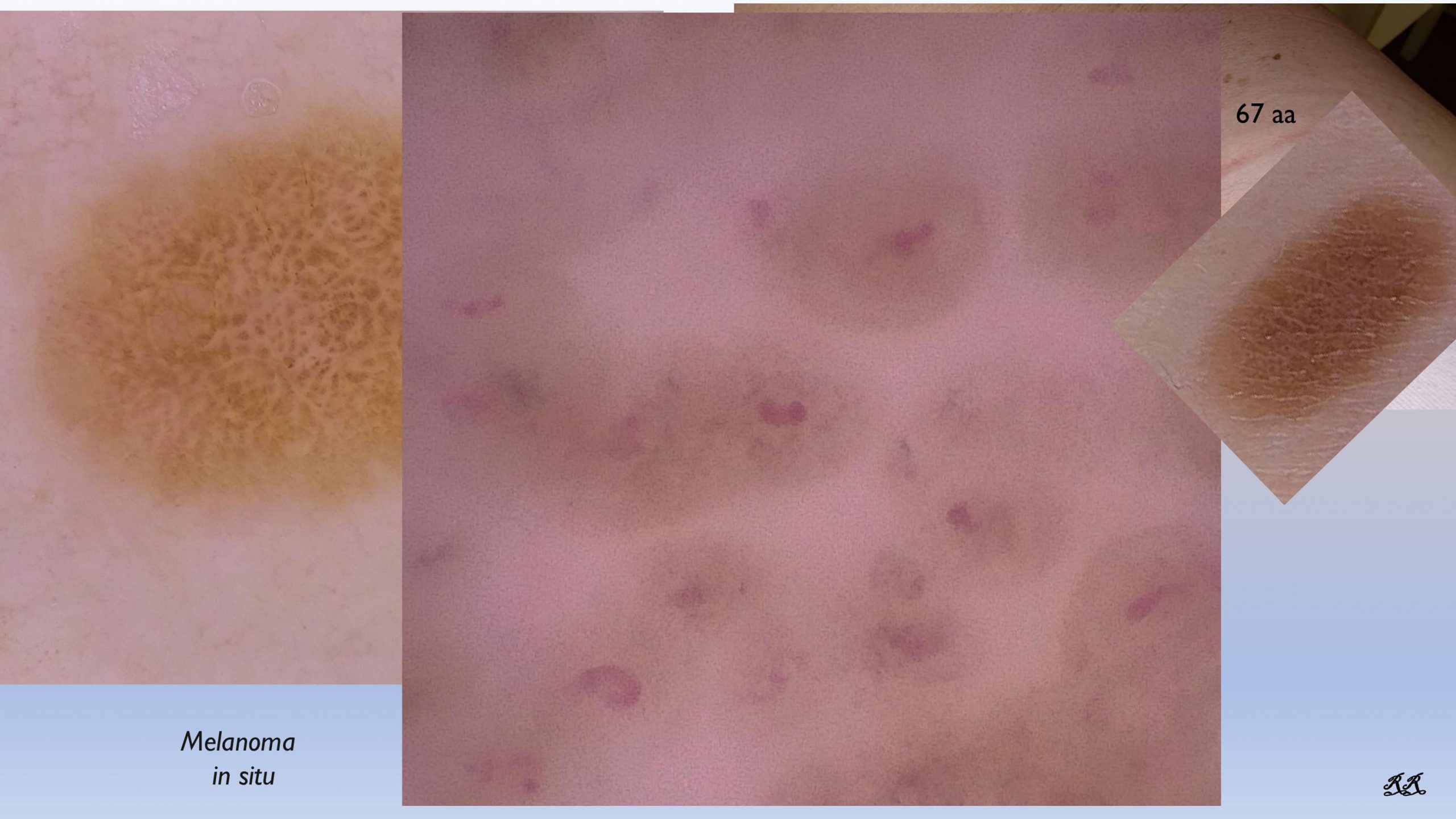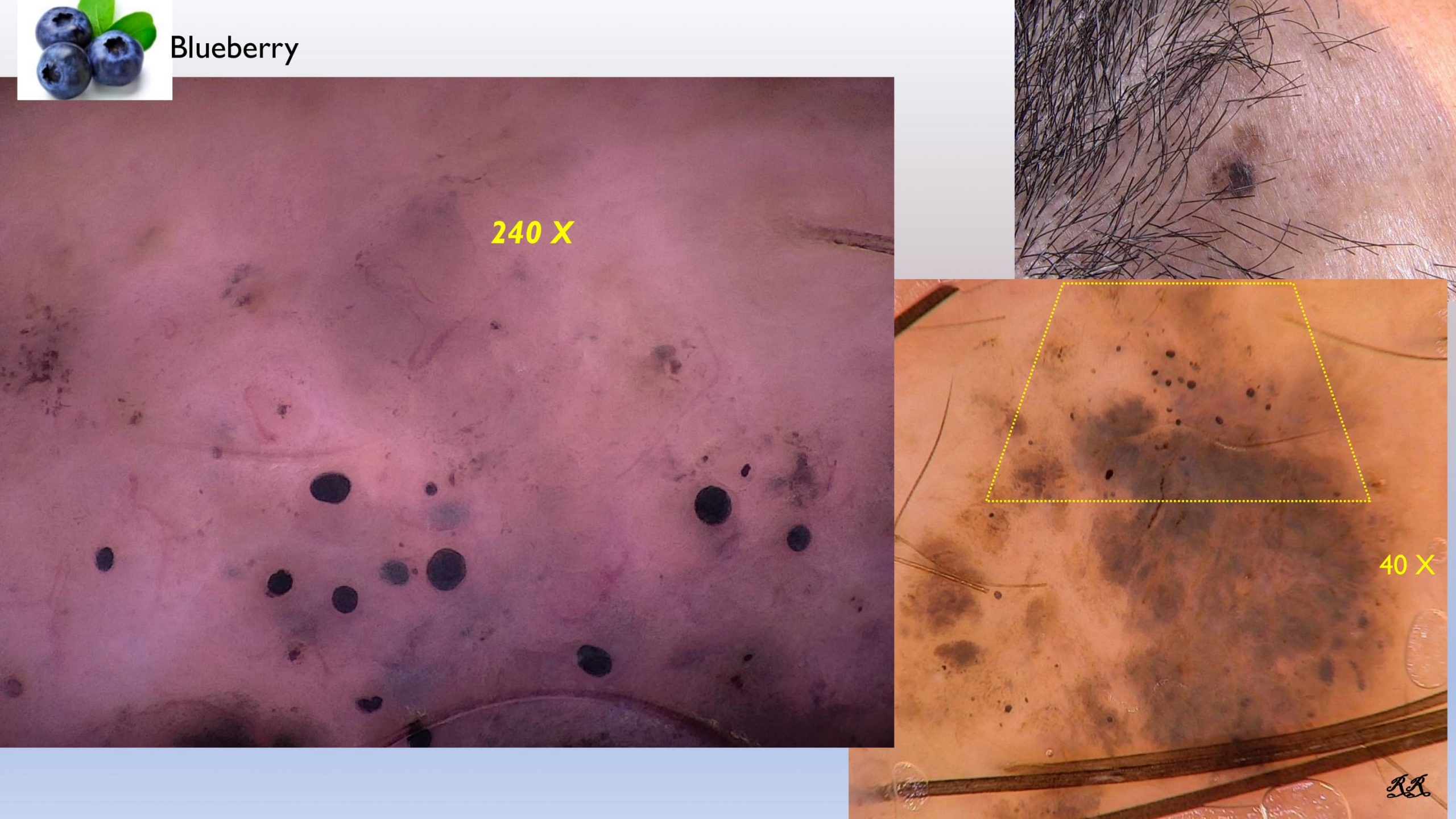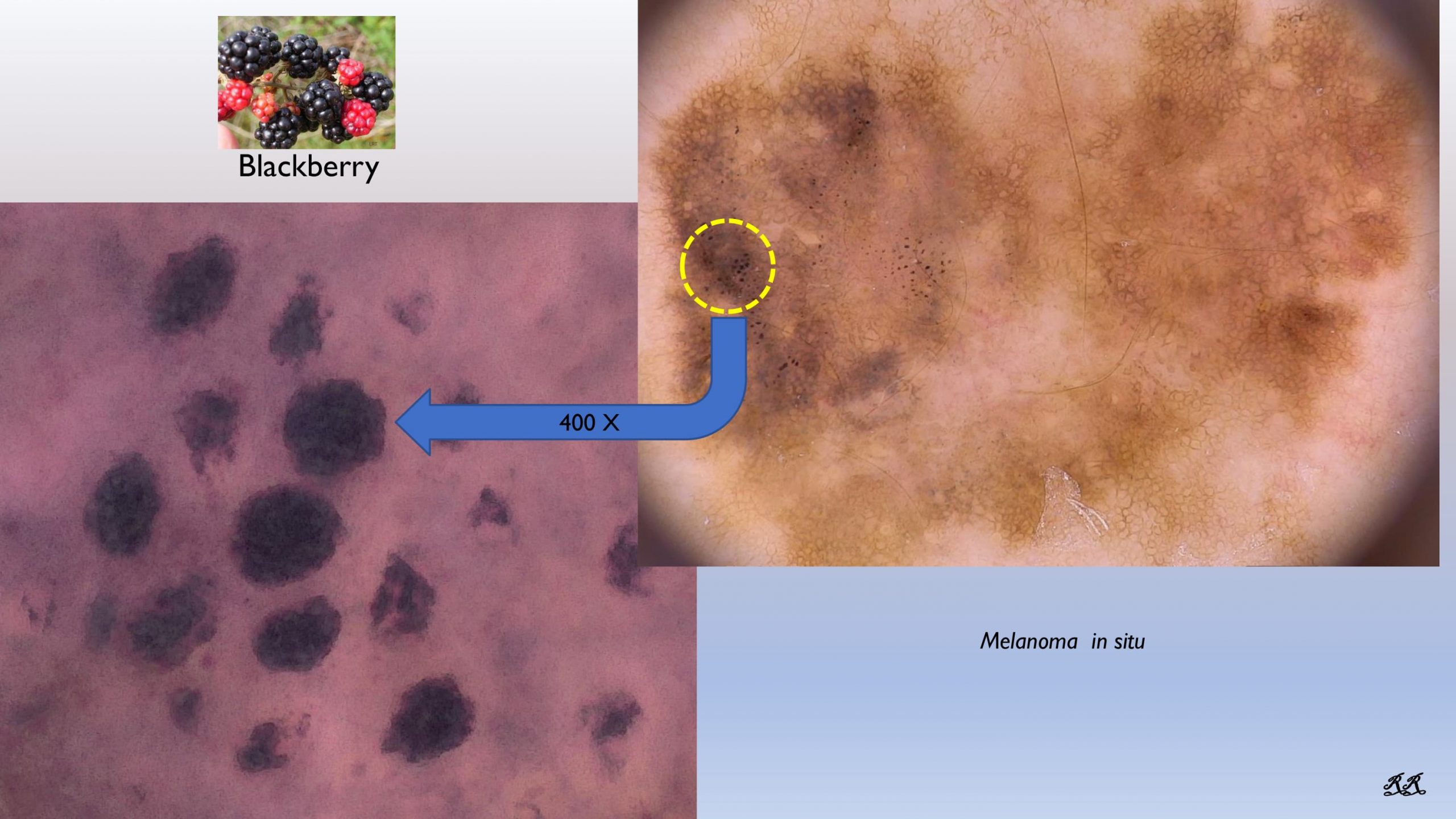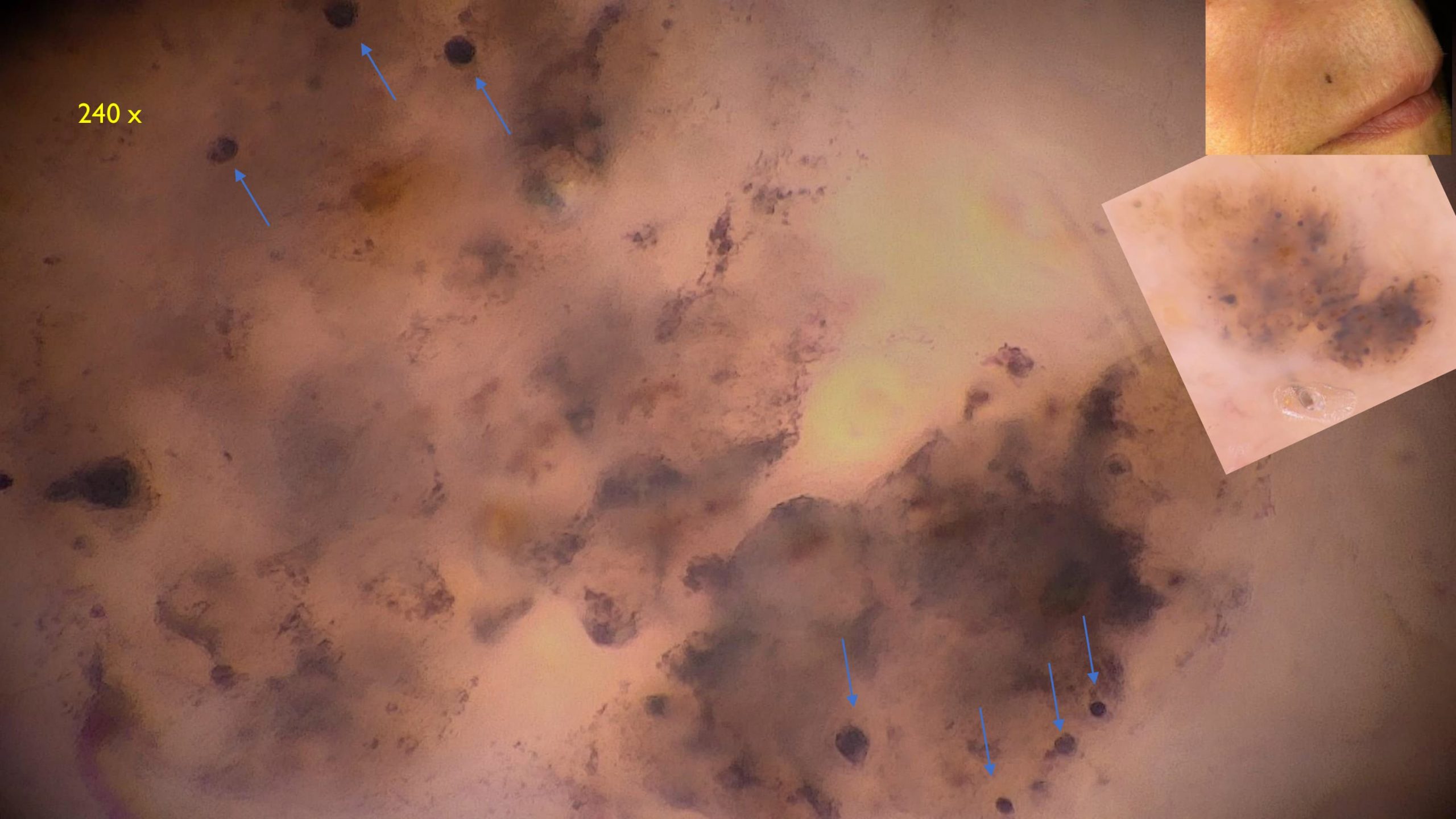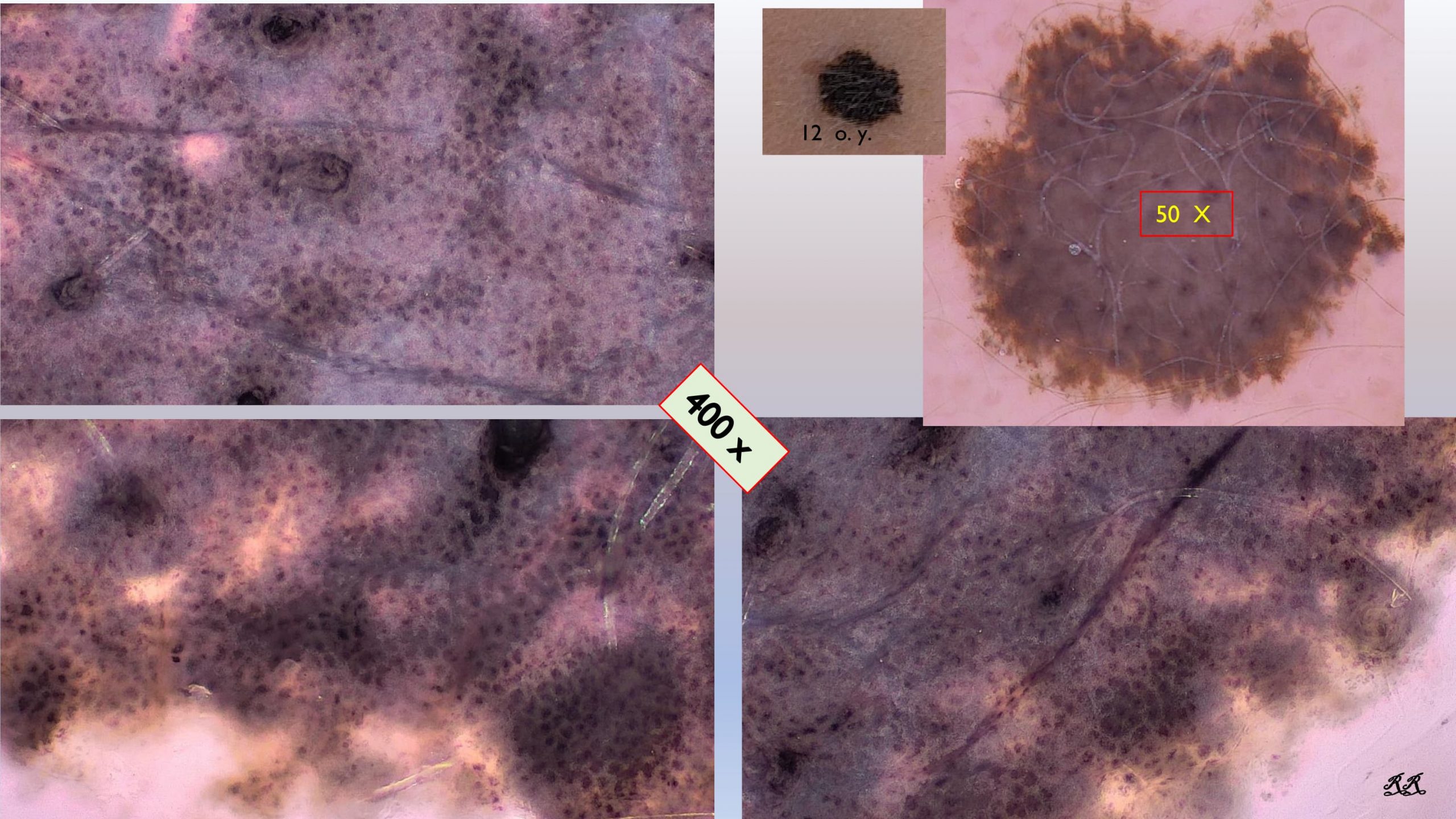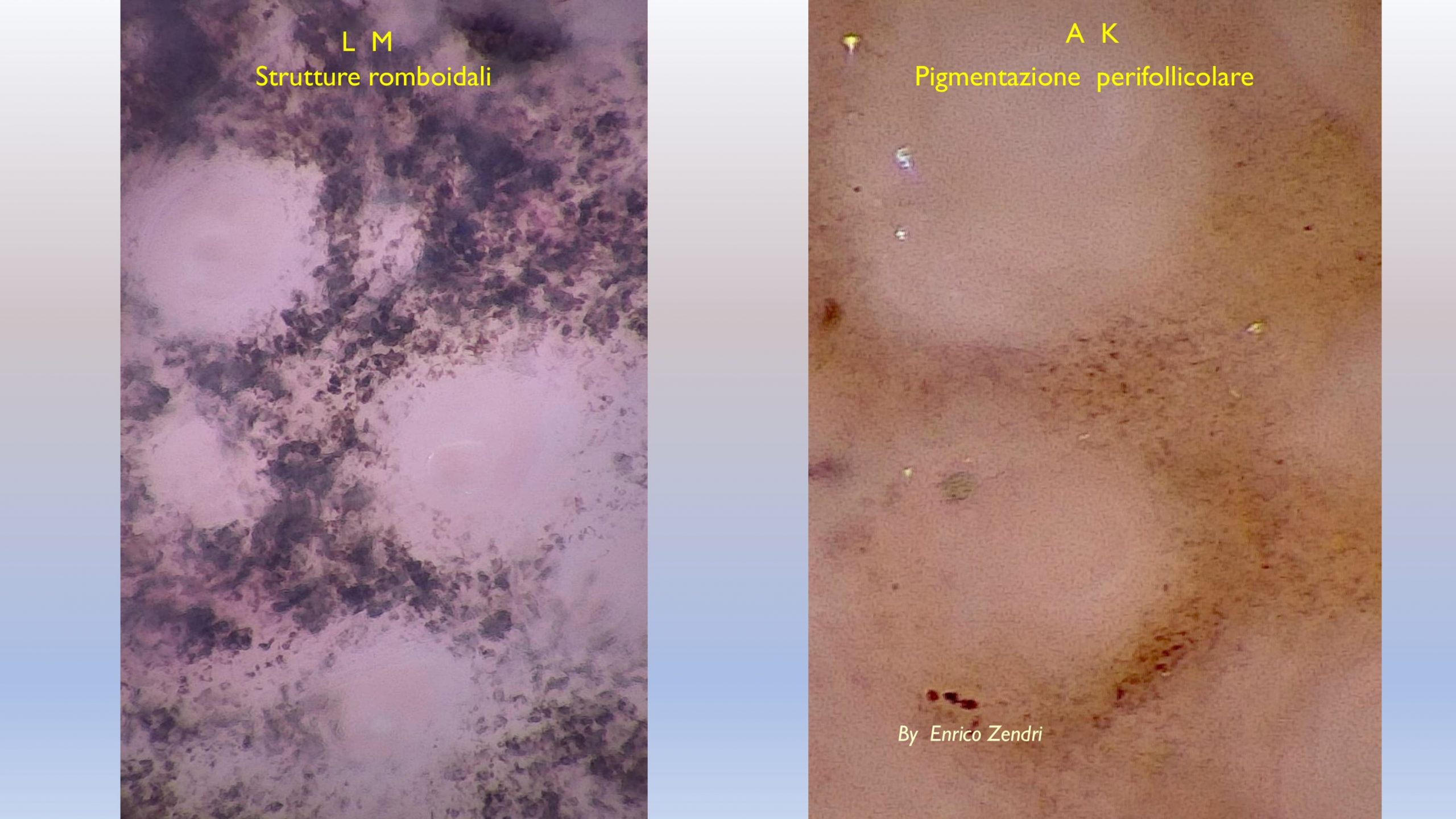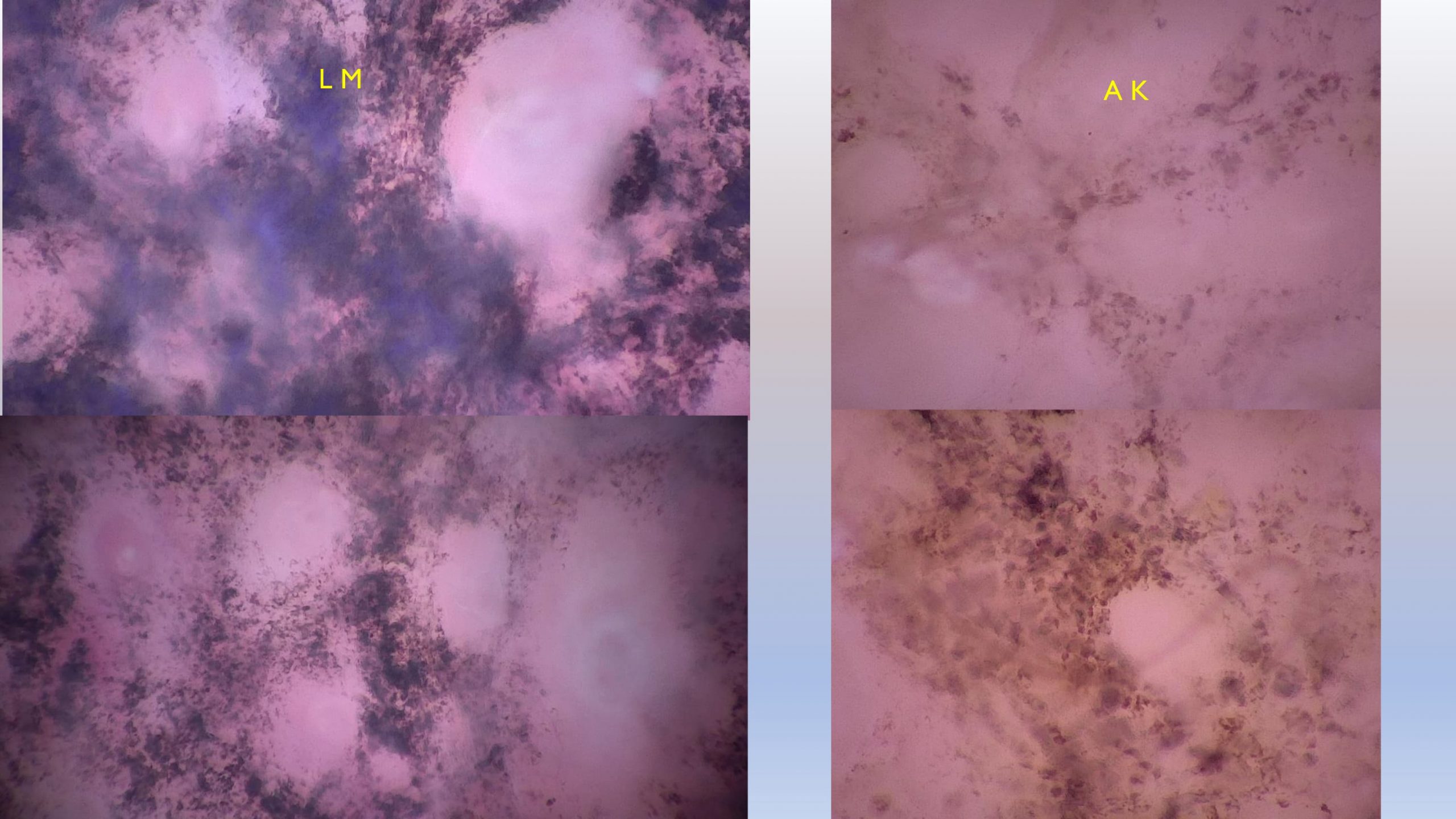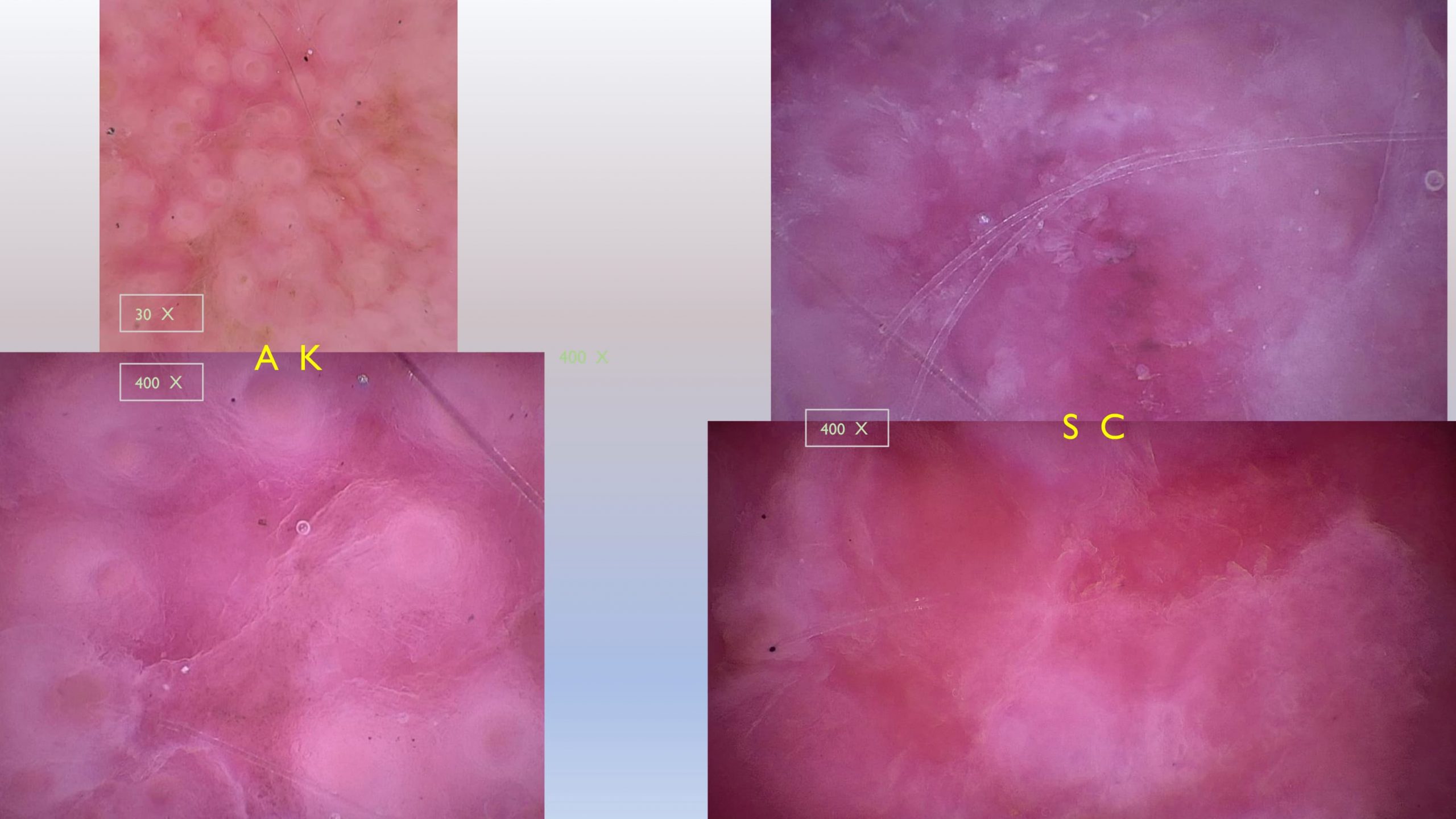O.S.H.M.D. - THIRD PART
 The dermatologist Renato Rossi, in exclusive for Isplad, illustrates the advantages and peculiarities of demoscopy from 170 to 400 x or Optical Super High Magnification Dermoscopy (O.S.H.M.D.), with an extensive photographic kit.
The dermatologist Renato Rossi, in exclusive for Isplad, illustrates the advantages and peculiarities of demoscopy from 170 to 400 x or Optical Super High Magnification Dermoscopy (O.S.H.M.D.), with an extensive photographic kit.
Here it is the second of three articles, all of which will be subsequently published on this site.
By Renato Rossi (click on + to open)
For several years now, in the field of dermatology, the use of dermoscopy has demonstrated to facilitate the clinical recognition of various skin diseases, both of an inflammatory and infectious nature, as well as in the oncological field with the diagnosis of skin cancer.
However, despite the progress in refining image acquisition and in coding them through the research of patterns and criteria, in daily dermoscopic practice, we sometimes find ourselves faced with cases that are difficult to interpret. It becomes so arduous to decide how to manage the lesion and it would be useful to be able to go into more detail to clarify our diagnostic doubts.
At this point, we are offered the possibility of an upgrade. By changing optics and settings, in just ten seconds we are projected into the world of Optical Super High Magnification Dermoscopy (O.S.H.M.D). Let us have a look at details and aspects that facilitate and expand the interpretation of conventional images, starting from 170 x, 240 x and 300x and up to 400 x magnification, which allow us to highlight individual cells. The images are obtained from a direct optical view of the lesion and not from the digital multiplication of the conventional image.
In some respects, these images are similar to those that can be acquired with the Confocal Laser. Such images allow us to see a live enlargement close to the histological section of the pathologist.
We can have and in-depth view of the network and of the blood cells: previously unknown details that clarify the atypia such as the heterogeneity of the size of the pathological melanocytes. In the areas of clear regression melanoma, we discover the “angled nests” and the “angulated network,” with melanocytes packed into a subverted epidermal tissue
architecture. Finally, the “cellular spread” with the dispersion of melanocytes is enough for us to understand the it is melanoma.
These are some just some examples of the new patterns in high magnification resulting from the study of thousands of images confirmed by the comparison with the histological images by the dermopathologist Gerardo Ferrara.
The goal is to start forming a new dermoscopic iconography in our mind that integrates with the conventional one and that helps to improve our diagnostic skills.
Here is a series of images that open up the different perspectives of use of the 400x dermoscopy.
Now we will discuss “TARGET CAPILLARIES”, “BLUEBERRY”, “BLACKBERRY”, “spitzoid melanoma” and “actinic keratosis.”
💡 Touch or click the image to enlarge it💡
PHOTO 1
Photo 1 shows us the “TARGET CAPILLARIES”: this is how reticular depigmentation appears at 400X: a clear, rounded central area that reveals the irregular capillaries of the papilla, surrounded by a ring suffused with a more intense color.
PHOTO 2
In photo 2, histology shows us that this outer ring (A) corresponds to the interpapillary ridges in which the intense proliferation of pleomorphic melanocytes surrounds the dermal papilla (from above we see it as a suffused ring: we cannot distinguish the individual melanocytes because they are in the dermis). The roof of the papilla (B) forms the clearest area since the layer of melanocytes that covers the apex of the papilla is thinner and allows a glimpse of the underlying vessels.
PHOTO 6
In this melanoma on site the reticular depigmentation is not very evident: the lines are unclear, while at 400x “TARGET CAPILLARIES” is evident and helps the diagnosis.
PHOTO 8
“O.S.H.M.D.” is not only 400X magnification but also lower magnifications. Here, the black spots are difficult to decipher at 40X, but at 240X they are evident within a basal cell carcinoma in collision with a dermal nevus. Blackheads are uniformly black, with sharp edges: this is called “BLUEBERRY.”
PHOTO 9
In melanoma the blackheads have more colors and the edges are frayed: this is called “BLACKBERRY.”
PHoto 12
In Spitz nevus we can observe a carpet of uniform cells: we do not know if they are melanocytes or pigmented keratinocytes.
PHOTO 14 e 15
The dermoscopic characteristics of lentigo maligna and pigmented actinic keratosis are much more defined at 400X than at 20X magnification.
PHOTO 14 e 15
The dermoscopic characteristics of lentigo maligna and pigmented actinic keratosis are much more defined at 400X than at 20X magnification.


